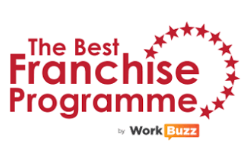Franchising offers an excellent way for new brands to quickly ramp up their operations. Businesses entering the sector with just a few corporate stores under their belts are often ten a penny; its far rarer to see brands that are already a household name throwing their hat in the ring. So, whilst high-street, shopping centre and supermarket-based hair salon chain Supercuts might be a newcomer to the UK franchising sector, it’s safe to say that it’s bringing a whole heap of heritage with it.
Originally Supercuts was the brainchild of Frank Emmett and Geoffrey Rappaport, two hairdressers with experience of operating full-service salons. “They’d seen the gap in the market for affordably priced, no-appointment salons,” says Jackie Lang, managing director of Supercuts UK. Inspired by this realisation, the two co-founders created the first Supercuts in Los Angeles in 1975 and before long were sat at the helm of a thriving hairdressing business.
Realising the raw potential of what they had on their hands, Emmett and Rappaport recognised they had to find a way to quickly ramp up their operations. That could mean only one thing. “They decided the easiest way to achieve market penetration was through franchising,” Lang says. Developing the model for the nascent hairdressing franchise was a cinch, in no small part because the business was structured in a manner that readily leant itself to replicability. “Therein lies the secret,” Lang says. “It was so easily transportable and straightforward to operate; the strength of this business model is its simplicity.”
Suffice to say, this didn’t go unnoticed by larger players in the market. In 1996, the company was snapped up by multinational hair-salon chain Regis Corporation and the hairdressing giant refined the operation still further. “When the Regis Corporation acquired Supercuts, they then put even more automation and processes into the business,” says Lang. In time this has seen the American side of Supercuts’ operation ramp up considerably, with the salon nearing almost 2,000 franchised outlets across the US.
Supercuts’ point of difference has always been its emphasis on wallet-friendly, stress-free hairdressing. “It’s about creating a no-fuss experience, taking any risk out of appointments and making it really convenient for the consumer to engage,” Lang explains.
But when the brand began its corporate expansion this side of the pond in 1999, it realised that the peculiarities of the UK market required some tweaks to its approach. Not only did its clientele skew 75% female, rather than the 75% of male customers it received stateside, but it became clear its customer base didn’t want a low price point at the expense of a stylish do. “They still want value and convenience but when they come in they want to make sure that they’re not compromising style for price,” says Lang. In light of this, the UK brand has spent a great deal of time developing a premium feel for its shop fits and service without hitting its customers in the purse.
This has proven an incredibly successful approach for Supercuts UK, ensuring positive growth in same-store revenues every year since its inception. And whilst it’s fair to say the 2008 recession had a transformative effect on the UK hairdressing market, the hairdressing chain found its low price point actually served to its advantage, with both high-end and value offerings escaping the global economic slowdown relatively unscathed. “The mid-market is the market that’s been really squeezed,” Lang says. This, coupled with its comparatively few competitors, has meant there is a huge market share ready for the brand to capitalise on.
That’s why Supercuts eventually turned its mind to franchising in the UK. “We thought: ‘it’s worked so well in the US, why don’t we start to think about franchising?’,” recalls Lang. But whilst it would have been tempting to lift the American model wholesale, the aforementioned differences between the markets either side of the Atlantic meant the UK brand has spent some time translating its franchise processes for the British market. “We didn’t reinvent the wheel but it’s safe to say that we anglicised some things,” she says.
Not only has Supercuts focused on making its approach to haircutting, its booking systems and its marketing as replicable as possible, it has also spent time crafting a franchise package that offers its franchisees comprehensive support. “We’ve created a full turnkey operation,” says Lang. Supercuts guides its franchisees through site selection, buildout and marketing, giving them a helping hand with everything up to and including their first day of trading. After this it will continue to visit salons once a month to check in on franchisees and ensure that they’re adequately supported. “It’s almost a complete partnership,” explains Lang.
Whilst it’s still very early doors for the franchise – Supercuts UK only officially announced its foray into franchising in June this year – it’s getting serious about signing up new recruits, hiring franchise marketing agency Arc Media to get the word out. “We’re going to go through digital, franchise magazines, PR and obviously word of mouth,” says Lang. In terms of what it’s looking for in a franchisee, Supercuts is thinking more entrepreneur than coiffeur. “We’re looking for people who have business acumen, who like people and can motivate staff,” she says.
And it certainly doesn’t seem short of candidates; the franchise has already signed its first franchisee with another in the pipeline. It is looking to bring in around ten franchisees in its first year, before ramping up to 25 or 50 a year and setting its sights on territories overseas in Europe and Asia. But Lang is keen to emphasise that Supercuts isn’t prepared to put expansion over delivering the best possible deal for both its customers and franchisees. “We’re always looking to improve the guest experience and the process, so it delivers value,” she says. “It’s all about thinking about one guest at a time.””

Josh Russell
When he isn't tooling around on trains in a tux like the Daniel Craig of the Greater Anglia transport system, Russell spends his time living the glamourous life of an enterprise journalist, judging Digital Business of the Year at the National Business Awards and attending conferences like NixonMcInnes' Meaning 2013. However, like all good secret agents, Russell lives a double life - in his case, as a closet revolutionary. Social enterprise, sustainable business and collaborative practices are his true passions, something that he has had plenty of opportunity to air in his features here at Elite Franchise.

Josh Russell
When he isn't tooling around on trains in a tux like the Daniel Craig of the Greater Anglia transport system, Russell spends his time living the glamourous life of an enterprise journalist, judging Digital Business of the Year at the National Business Awards and attending conferences like NixonMcInnes' Meaning 2013. However, like all good secret agents, Russell lives a double life - in his case, as a closet revolutionary. Social enterprise, sustainable business and collaborative practices are his true passions, something that he has had plenty of opportunity to air in his features here at Elite Franchise.


































